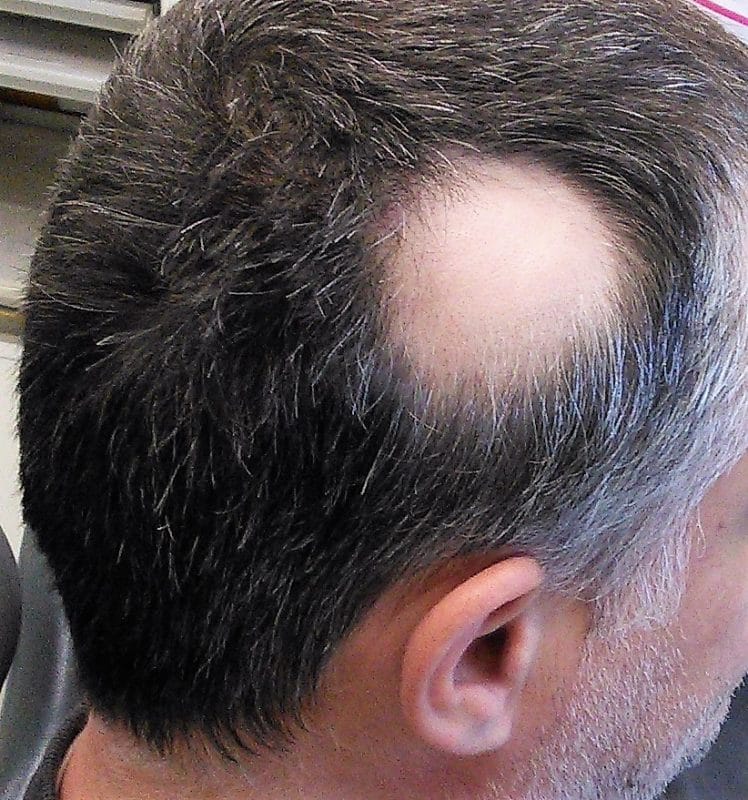Pattern hair loss, sometimes referred to as androgenetic alopecia, affects both men and women equally frequently. Because it manifests in distinct patterns, this type of alopecia is more commonly referred to as pattern hair loss. However, the patterns experienced by men and women differ.
male-pattern baldness
Male pattern hair loss will impact more than 50% of all men over 50, according to study. Genetics is the main factor causing pattern hair loss in men, and studies have linked it to androgens, the hormones produced during sex.
The Norwood Scale
The Norwood Scale, a seven-point scale that identifies the stages of male pattern hair loss, is used to quantify it. The higher the number on the scale, the more serious your hair loss is.
Norwood Type 1
Men with Norwood Type 1 have little to no hairline recession and no visible loss of hair at the crown. Some men frequently carry on a Norwood Type 1 hair pattern for the duration of their life.
Norwood Type 2
Men have little hair loss at the scalp’s top but a small recession of the hairline at the temples. The earliest indications of the typical M-, V-, or U-shaped hairline start to show at this point. When they reach this stage, not all men continue to lose hair as they age.
Norwood Type 3
Men who have this condition see considerable hair loss at the scalp’s frontal region and the temples. The M-, V-, or U-shaped hairline typically forms at this time. At this period, some men also notice hair loss at the crown or vertex.
Norwood Type 4
At this stage, the front of the scalp, the temples, and the crown all show signs of hair loss. Men frequently have a thin hairline separating the two areas of the head where hair loss has occurred.
Norwood Type 5
Men with Norwood Type 5 hair have noticeable, obvious thinning at the front of the head, the temples, and the crown. The thinning of the hairband that separates the forehead and the crown is apparent due to the more pronounced hair loss. At this point, the hair loss horseshoe pattern is more obvious.
Norwood Type 6
At this stage, the front of the scalp, the temples, and the crown all experience severe hair loss. The little band that did separate the forehead and crown is then united to the areas of hair loss by thinning or complete hair loss.
Norwood Type 7
Men with Norwood Type 7 hair have the most extreme cases of male pattern baldness. The horseshoe pattern is now all that is left of the hair on the front of the head, the temples, and the crown.
female-pattern baldness
Pattern hair loss in women is also rather frequent. Before the age of 65, less than half of women will noticeably lose hair; this usually happens after childbirth or menopause. Hormones are likely to blame for the hereditary nature of female pattern hair loss.
Ludwig Scale
The amount of female pattern hair loss is measured using the Ludwig Scale.
Ludwig Type 1
Mild and barely perceptible thinning that starts at the crown of the skull. Women can observe their portion, which will broaden somewhat, for the first indications of thinning.
Ludwig Type 2
Significantly more scalp is beginning to appear, with visible balding on the crown or top of the head. The hair begins to feel or appear thinner, and shedding increases. Your hair no longer holding its previous styles is another indicator of mild hair loss. Your hair most likely won’t look the way it used to and will be more difficult to style. This could be due to a lack of volume or a wider part.
Ludwig Type 3
The crown and top of the head have much less hair. It is the most severe kind of female pattern hair loss. The left hair is so thin that there is no longer a contrast between the hair and scalp, making the scalp quite evident. Unexpectedly, more women will experience hair thinning than total hair loss in terms of female hair loss.
BOOK YOUR CONSULTATION NOW
